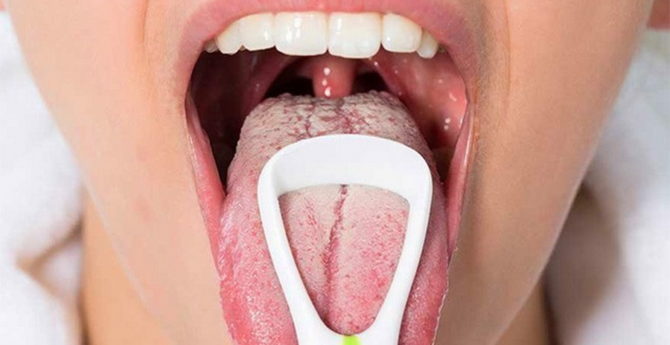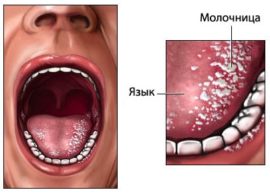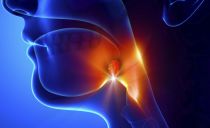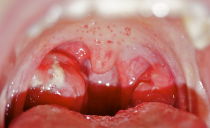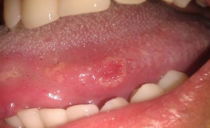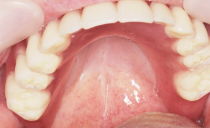Candidiasis stomatitis: causes, symptoms, drug and alternative treatment
Stomatitis is one of the most common diseases of the oral cavity. It can be traumatic, bacterial, viral, but the most common form of the disease is candidal. This is due to the fact that its conditionally pathogenic microorganisms, which are contained in the healthy microflora of the oral cavity, cause it. A minor malfunction in the body is enough for the fungi to actively multiply and lead to the development of fungal stomatitis.
Treatment of candidal stomatitis in adult patients and in children consists in taking antifungal drugs, local treatment of the affected mucosa and increasing immunity. The therapeutic course should be monitored by a specialist.
Content
Symptoms of candidal stomatitis in adults
Stomatitis is an inflammatory process in the mouth. If a conditionally pathogenic fungus becomes a provocateur of inflammation, doctors diagnose the candidal form of the disease, the second name of which is oral thrush. Young children and adults with weakened immunity are most susceptible to the disease.
The first symptom of candidal stomatitis is the appearance of redness on the mucous membranes of the gums, the inner surface of the cheeks, palate and tongue. The lesions respond to cold and hot, when you touch them there is a burning sensation, pain. Gradually, the sores acquire a white border around the edges and become covered with plaque in the form of cheesy flakes.
The following problems await the patient:
- discomfort during eating;
- violation of taste perception;
- constant soreness;
- signs of intoxication;
- bleeding.
If treatment of candidal stomatitis is not started in time, inflammation can spread to other tissues and organs. In adults, a fungal infection often spreads to the skin, larynx and genitals; in young children, the intestines and esophagus suffer.
Symptoms of candidal stomatitis largely depend on its form. The most common is acute pseudomembranous. With it, the mucous membranes of the mouth are covered with a whitish coating, similar to a film or plaque. At the beginning of the disease, they can be removed, then traces of hyperemia will remain on the damaged area, which heal quickly enough.
A severe form of the disease is characterized by a large number of foci of plaque. They can merge and affect almost the entire mucous membrane of the mouth. It is difficult to remove whitish spots on your own, but if the patient manages to do this, large bleeding erosions remain at the site of plaque, causing serious discomfort.
If you do not start treating candidal stomatitis in time, the acute form of the disease can turn into a chronic one. With it, characteristic whitish plaques are absent, but other unpleasant symptoms persist - the mucous membrane is dried up, there is a noticeable pain when swallowing.
Causes of candidal stomatitis in adults
Candida fungus is a conditionally pathogenic microorganism, that is, it lives in the mouth of even a healthy person. Each has its own quantitative norm for the content of fungus in the microflora of the oral cavity. The disease begins only when the balance is disturbed due to the active reproduction of microorganisms.
It can provoke it:
- Weakening of the immune system: the "extra" fungus is destroyed by the body's defenses, if they work at full strength. But small enough health problems are enough to stop control.
- Wearing dentures: improper dentures injure soft tissues, which provokes an inflammatory process.
- The abuse of alcohol and tobacco.
- Age: most often children and elderly people suffer from stomatitis, since in children the immunity is at the stage of formation, and in adulthood it gradually begins to weaken.
- Long-term use of antibiotics: tablets kill not only harmful bacteria, but also beneficial ones. The usual composition of microflora is disturbed, and dysbiosis often causes the activity of pathogenic microorganisms.
- Hormonal problems: with an imbalance of hormones, the blow falls on both the natural microflora and the strength of the immune system.
- Exacerbation of chronic diseases: the greatest danger is diabetes mellitus, accompanied by a malfunction of carbohydrate metabolism, and diseases of the digestive system, leading to a decrease in the acidity of gastric juice.
- Poor hygiene: poor-quality brushing or lack of teeth leads to the activity of fungi and various bacteria that attack sensitive areas of the mucosa. If there are microdamages in the mouth, they become a source of infection.
If a pregnant woman is sick with genital candidiasis, during childbirth, the pathology is transmitted to the child. In this case, oral thrush can begin in the first days of the baby's life.
You cannot completely cure candidal stomatitis in your mouth without knowing the cause of its occurrence. If the predisposing factor is not eliminated, the risk of repeated stomatitis is high, and then the therapy process will have to be started again.
Medicines for the treatment of candidal stomatitis
If at the initial stages of the disease you can limit yourself to the local treatment of rashes, advanced candidiasis stomatitis needs to be treated with more serious pharmacy drugs. The use of antibiotics for such a disease is useless; common antifungal drugs are used in the fight against fungi.
Diflucan
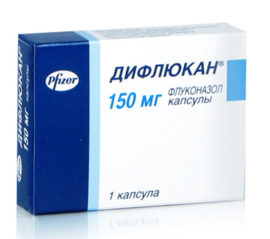 Diflucan is a capsule for oral use, their active ingredient is fluconazole. They are used to treat any fungal diseases, including candidiasis of the oral cavity. After using the drug, fluconazole penetrates into all fluids and protects the entire body from fungus.
Diflucan is a capsule for oral use, their active ingredient is fluconazole. They are used to treat any fungal diseases, including candidiasis of the oral cavity. After using the drug, fluconazole penetrates into all fluids and protects the entire body from fungus.
Dosage is determined individually, depending on the age of the patient and the overall clinical picture. Marked relief often comes after the first day of treatment, but stopping the drug prematurely is prohibited: the disappearance of symptoms does not mean the cessation of the inflammatory process.
Nizoral
Nizoral is an antifungal drug with ketoconazole. It stops the synthesis of the fungus and prevents its reproduction. After use, ketoconazole is rapidly absorbed and distributed throughout the body tissues.
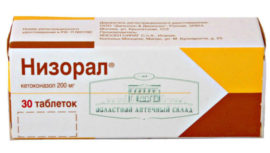 Dosage depends on the age and weight of the patient. Children over three years old weighing up to 30 kg can drink half a tablet once a day. With a mass of more than 30 kg and adults are prescribed a whole tablet per day. To cure candidiasis, you must take Nizoral for at least a week.
Dosage depends on the age and weight of the patient. Children over three years old weighing up to 30 kg can drink half a tablet once a day. With a mass of more than 30 kg and adults are prescribed a whole tablet per day. To cure candidiasis, you must take Nizoral for at least a week.
The tool is not suitable for people suffering from liver problems or individual intolerance to the components. Side effects are possible - nausea, vomiting, stool disturbance, signs of allergies and dizziness.
Itracon
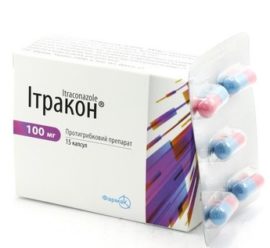 Itracon is a capsule based on itraconazole, an antifungal component. It destroys the fungus, eliminates the symptoms of candidal stomatitis in adults. With prolonged use of the drug, its therapeutic concentration is preserved in the tissues and nail keratin.
Itracon is a capsule based on itraconazole, an antifungal component. It destroys the fungus, eliminates the symptoms of candidal stomatitis in adults. With prolonged use of the drug, its therapeutic concentration is preserved in the tissues and nail keratin.
The duration of therapy is 15 days, during which it is necessary to drink one capsule per day after meals.Itracon is prohibited in acute heart failure, used with caution in case of problems with the kidneys and liver. In case of an allergic reaction, further administration is canceled.
Local medication for stomatitis
For local effects on the fungus, local remedies are used - gels, ointments and solutions. They are designed to alleviate the course of the disease, stop the multiplication of microorganisms, disinfect the oral cavity and contribute to the speedy healing of injured areas.
Eludryl
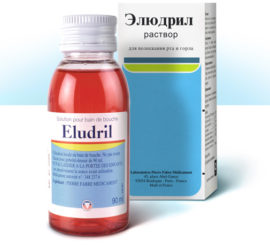 Eludryl is a topical solution that has anti-inflammatory, antifungal and bactericidal effects and is a mild anesthetic. When used correctly, the product is non-toxic, quickly removes white deposits and other signs of infection.
Eludryl is a topical solution that has anti-inflammatory, antifungal and bactericidal effects and is a mild anesthetic. When used correctly, the product is non-toxic, quickly removes white deposits and other signs of infection.
Eludryl is used to rinse the oral cavity: 2–4 teaspoons of the product are diluted in half a glass of boiled water at room temperature. Repeat the procedure 2-3 times a day.
Ethyl alcohol is part of the Eludryl solution, so the drug is not recommended for the treatment of children. If it is still used, it is necessary to ensure that the baby does not swallow it.
Dactarin
Candidiasis stomatitis in adult patients and adolescents can be treated using the Dactarin oral gel - an antibacterial and antifungal drug for local and external use. The active substance of the drug is miconazole. The drug is suitable for prophylactic use.
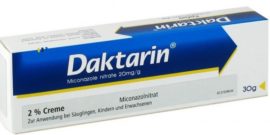 Processing of mucous membranes with gel is carried out 3-4 times a day, for one application half the teaspoon of the product is needed. It is applied to problem areas of the mucosa using a soft swab of bandage or cotton wool. For some time, it is recommended to keep the gel in your mouth, do not immediately swallow it or spit it out.
Processing of mucous membranes with gel is carried out 3-4 times a day, for one application half the teaspoon of the product is needed. It is applied to problem areas of the mucosa using a soft swab of bandage or cotton wool. For some time, it is recommended to keep the gel in your mouth, do not immediately swallow it or spit it out.
Contraindications to the use of Dactarin are renal or hepatic insufficiency, diabetes mellitus, pregnancy, lactation and the age of 12 years. With prolonged use (more than two weeks), stool disorders, skin allergic reactions are possible.
Treatment of candidal stomatitis in the mouth in adults with folk remedies
Treatment of candidal stomatitis with folk remedies is most effective in the initial stages of the development of the disease. It is recommended to use them in combination with traditional methods of therapy. Various decoctions and solutions are well suited for local treatment of ulcers. The simplest option is to rinse your mouth with a solution of soda and salt, for the preparation of which is taken by a teaspoon of each substance in a glass of warm water. The liquid is thoroughly mixed and applied at least once an hour. With its help, it is possible to quickly remove inflammation, remove pain and destroy bacteria that multiply on the mucous membrane.
An antibacterial and anti-inflammatory effect has a decoction of chamomile. A tablespoon of dry grass is poured with a glass of boiling water and brought to a boil. When the liquid has cooled, it must be filtered. Rinse your mouth with a decoction of chamomile as often as possible.
For local processing of plaque, a special ointment is prepared. It consists of:
- 50 g of olive oil;
- 20 g of calendula flowers.
The oil is heated in a water bath, then calendula is added to it, and the mixture simmers for another 15 minutes. The mixture is removed from the stove and infused for at least four hours. Ready marigold oil is applied to the plaques with a cotton swab, during the procedure, care must be taken not to remove the plaque.
Diet
Throughout the treatment, it is advisable to adhere to a specific nutritional system. Some products, for example, carbohydrates and sweets, contribute to the growth of the fungus - they create an environment in the mouth that is favorable for the activity of dangerous microorganisms.
Have to exclude from the diet:
- simple carbohydrates;
- semi-finished products;
- fast food;
- snacks
- salty;
- oily;
- spices;
- spices and seasonings;
- White bread;
- any sweets.
The basis of the diet should be fresh and boiled vegetables, cereals and legumes, crackers, boiled meat, non-acidic fruits and vegetables. A prerequisite is the consumption of fiber. It is advisable not to use oil during cooking.
Candida ulcers are very sensitive to temperature changes, so food should not be cold or hot. It is also not a period of the disease, it is better to refrain from eating too hard foods that can further injure the mucous membranes.
Prevention
To protect yourself from stomatitis, you need to monitor your health. A balanced diet rich in vitamins and minerals will help maintain the immune system. In the cold season, when access to fresh vegetables and fruits is limited, it is recommended to take vitamin-mineral complexes and immunomodulators.
It is important to carefully follow all the rules of oral hygiene - brush your teeth at least twice a day, and after eating, rinse your mouth with rinsing rinse or at least running water. Every six months, you should visit the dentist for prevention, even if nothing bothers you.
Despite the fact that Candida remains in the body forever, stomatitis is treatable. With the right approach to therapy, the recovery process will take only a few days. In the future, you just need to adhere to preventive health care to prevent re-exacerbation.

